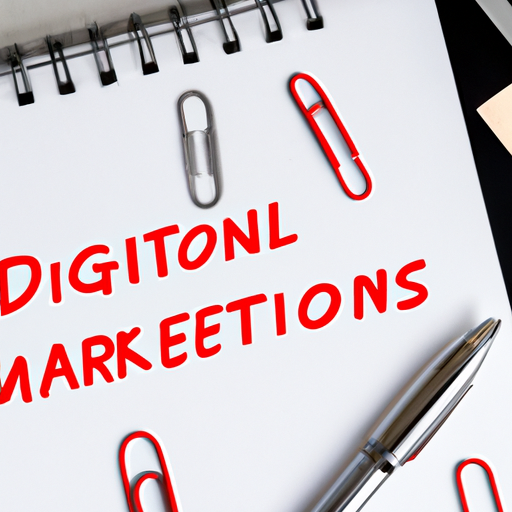Unlocking Solutions In Digital Marketing
Digital marketing is more important than ever in today’s fast-paced, interconnected world.
From small businesses to global enterprises, everyone needs effective solutions in digital marketing to thrive.
But what are these solutions, and how can they be tailored to your unique needs?
Let’s dive into the key components and best practices that make up successful digital marketing strategies.
The Foundation: Understanding Your Audience
To create impactful digital marketing solutions, it all starts with understanding your audience.
Who are they?
What do they need?
How can your product or service solve their problems?
By answering these questions, you lay the groundwork for a robust marketing strategy.
A great way to gather this information is through market research tools like surveys, focus groups, and social media listening.
For instance, consider a small e-commerce store aiming to increase its audience.
They might start by analyzing social media interactions and website analytics to understand which products attract the most attention and why.
Building Buyer Personas
Buyer personas help you visualize your ideal customers.
These semi-fictional characters represent different segments of your target market based on real data and some educated guesses about demographics, behavior patterns, motivations, and goals.
Creating detailed buyer personas can guide your messaging and help tailor your solutions in digital marketing to meet specific needs.
Imagine you’re running a fitness brand; creating personas like “Health-Conscious Hannah” or “Gym-Junky Jack” helps craft personalized content that resonates strongly with those groups.
Crafting A Robust Content Strategy
Content is king in the world of digital marketing.
A well-planned content strategy can set you apart from competitors by providing value to your audience consistently.
This means producing high-quality content that educates, entertains, or inspires action.
One excellent example is HubSpot’s blog; it offers valuable insights into various aspects of inbound marketing while subtly promoting their software services.
This approach not only drives traffic but also establishes them as thought leaders in the industry.
Types Of Engaging Content
Different types of content will appeal to different segments of your audience:
– Blog Posts: Share expertise on relevant topics.
– Videos: Demonstrate products or share behind-the-scenes footage.
– Infographics: Present data visually for easy consumption.
– E-books/Whitepapers: Offer in-depth analysis on industry-related subjects.
– Webinars: Provide live interactive sessions for deeper engagement.
Leveraging diverse formats ensures you keep all segments engaged while addressing their preferences effectively.
Effective Use Of Social Media Marketing
Social media platforms offer unmatched opportunities for reaching large audiences quickly without significant budget constraints.
However, each platform has its nuances – what works on Instagram might not be suitable for LinkedIn or Twitter.
Consider Nike’s approach; they use Instagram for visually appealing campaigns targeting younger demographics while utilizing LinkedIn for professional updates related specifically towards career growth within their company culture framework itself!
Choosing The Right Platforms
Focus efforts on platforms where potential customers spend most time:
1) Facebook: Widely used across age groups – great for community building & ads targeting wide range demographics.
2) Instagram: Perfect visual storytelling platform optimal younger audiences interested lifestyle brands/products
3) Twitter: Fast-paced news updates concise information sharing ideal public relations/brand communication
4) LinkedIn: Professional networking B2B interactions executive-level decision-makers
5) TikTok & Snapchat : Highly engaging short-form video content suitable primarily Gen Z
Aligning platform choice strengths ensures maximum impact resource allocation
Harnessing Power Of Search Engine Marketing (SEM)
Search engines play crucial role driving organic traffic; hence investing effort optimizing presence essential part comprehensive solution suite
SEO (Search Engine Optimization)- focuses improving website visibility organic search results via keyword optimization quality backlinks etc
PPC (Pay Per Click)- involves paid advertising ensure immediate visibility top search results relevant keywords
Combining both approaches balances long-term gains immediate results achieving holistic growth online presence over time period
Real-life example highlighting power SEM would be Shopify; consistently ranks high organic searches thanks strong SEO efforts coupled strategic PPC campaigns boost visibility further ensuring sustained growth trajectory!
Keyword Research Importance
Identifying right keywords base foundation successful SEO/PPC campaigns:
1) Tools like Google Keyword Planner SEMrush provide valuable insights into search volumes competition levels associated terms
2) Long-tail keywords often less competitive but highly targeted leading higher conversion rates lower costs
3) Regularly updating optimizing keyword lists ensures staying ahead competition maintaining relevance changing trends
Ensuring thorough research translates better performance overall campaigns ultimately driving higher quality leads marketing funnel
Email Marketing Automation Strategies
Emails remain one most effective channels nurturing relationships existing potential clients alike if done correctly!
Personalized automated email campaigns deliver timely relevant messages recipients increasing chances engagement conversions exponentially
Example would be Amazon’s recommendation emails based previous purchases viewed items effectively upselling cross-selling customers seamlessly integrating shopping experience itself!
Nurture Leads Through Segmentation
Segmenting email lists allows tailored messaging specific groups resulting higher open click-through rates:
1) Demographic segmentation – age gender location
2 )Behavioral segmentation – past purchase behavior website activity
3 )Interest-based segmentation – preferences interests hobbies
By crafting personalized journeys each segment increases likelihood converting subscribers loyal customers significantly over time period

